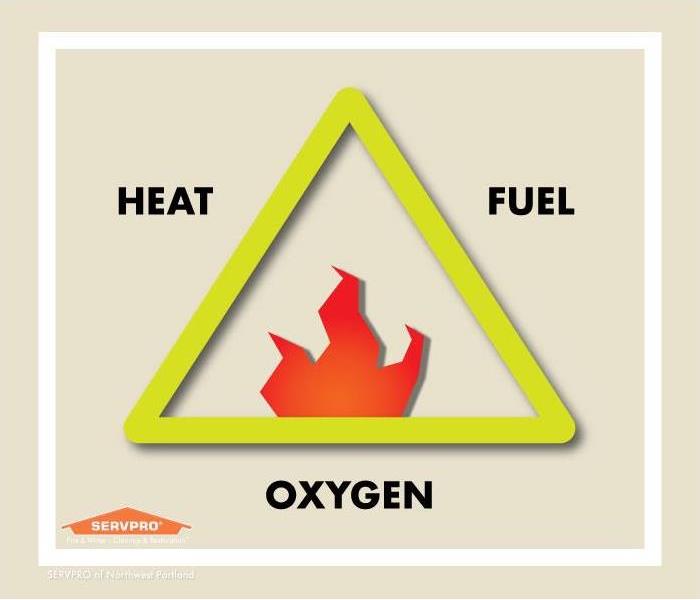The science of fire restoration
11/23/2020 (Permalink)
For every fire restoration professional, understanding the nature and science of fire is crucial to performing quality restoration work. Fire Restoration Technicians at SERVPRO of Northwest Portland go through an IICRC approved training program to learn the nature and effects of fire before working with fire damaged contents or materials. Here is an insight into the knowledge our technicians hold.
The first thing to understand about fire is that it requires three key elements to thrive - heat, fuel and oxygen. The visual by-products of fire can be generally categorized as PAH (Polycyclic Aromatic Hydrocarbons), which is often a toxin contained in smoke, and soot. Both PAH and soot particles have been reported to be carcinogenic to humans and both can damage or deteriorate material surfaces.
When arriving on scene, it’s helpful to understand the conditions of the fire. Restorer’s will work together with fire authorities as well as Fire Investigators to gather pertinent information, such as the air pressures and temperatures generated during combustion, which can help determine the degree of smoke contamination throughout a structure.
The type of damage a fire has on a structure and its contents can be dependent on the materials included, as well. For example, the severity of soot contamination increases with a lack of oxygen and decreases when a greater quantity of oxygen is present during the fire.
Additionally, some materials may cause different reactions when subjected to severe heat and combustion. When burned, synthetic materials (often plastic) will produce a thick, heavy black smeary residue. Plastic that is lighter in color or shade and is subjected to higher temperatures and soot will often yellow irreversibly.
Lastly, sometimes material surfaces will have an oily film after a fire. Sometimes, oily or sticky residue can be a result of a protein fire, but smoke can also carry vaporized oils. When more oils are present in a fire, they can be carried by the smoke and eventually settle to leave an oily film on surfaces that can be difficult to remove without expertise.
Fire Technicians at SERVPRO of Northwest Portland know how to restore a home or business after fire, and we do it every day. If you sustain fire, smoke, or soot damage in your home - no matter how small the affected area - you can call SERVPRO of Northwest Portland at 503-283-3658 to help you restore your property.

 24/7 Emergency Service
24/7 Emergency Service
